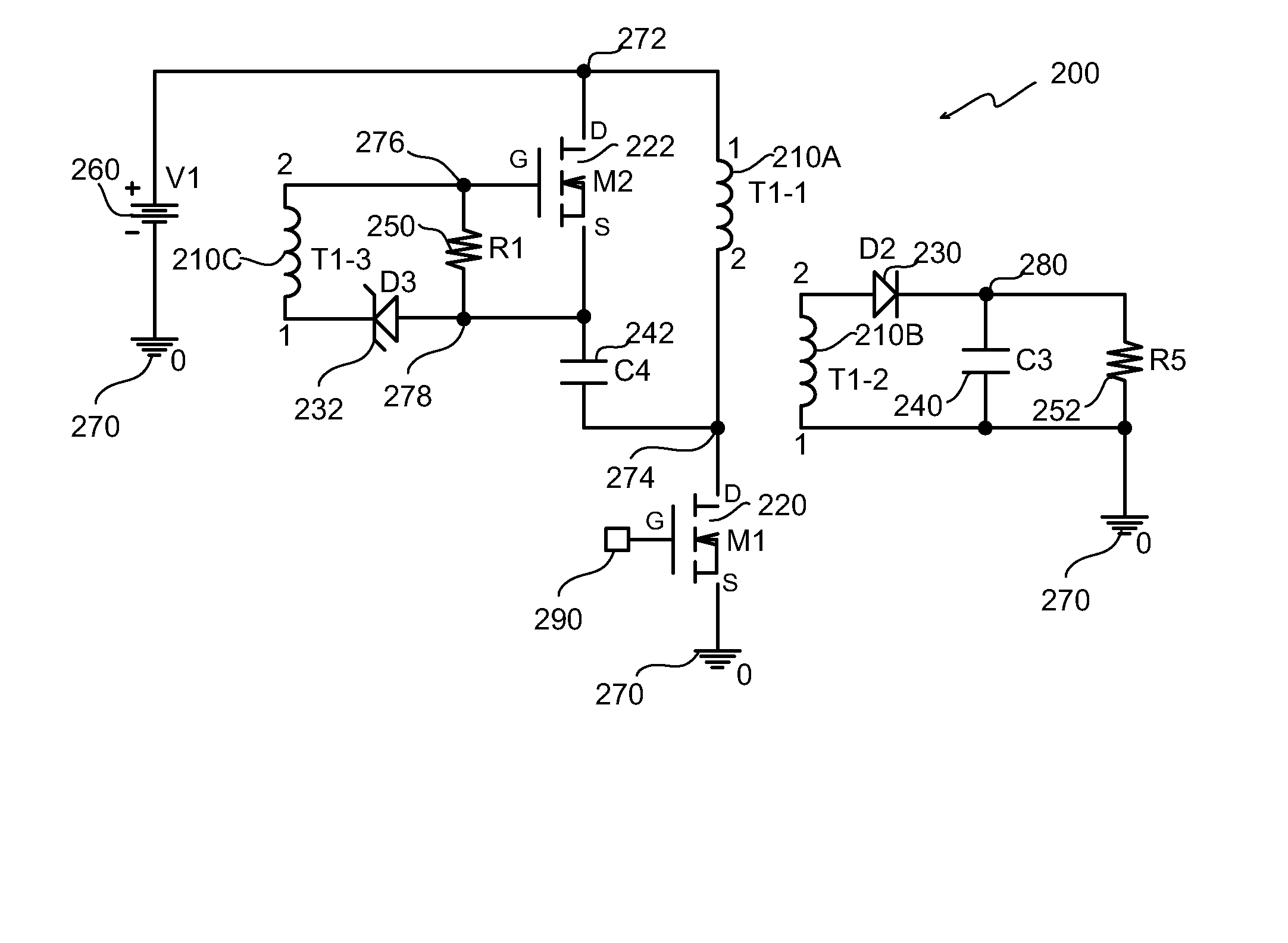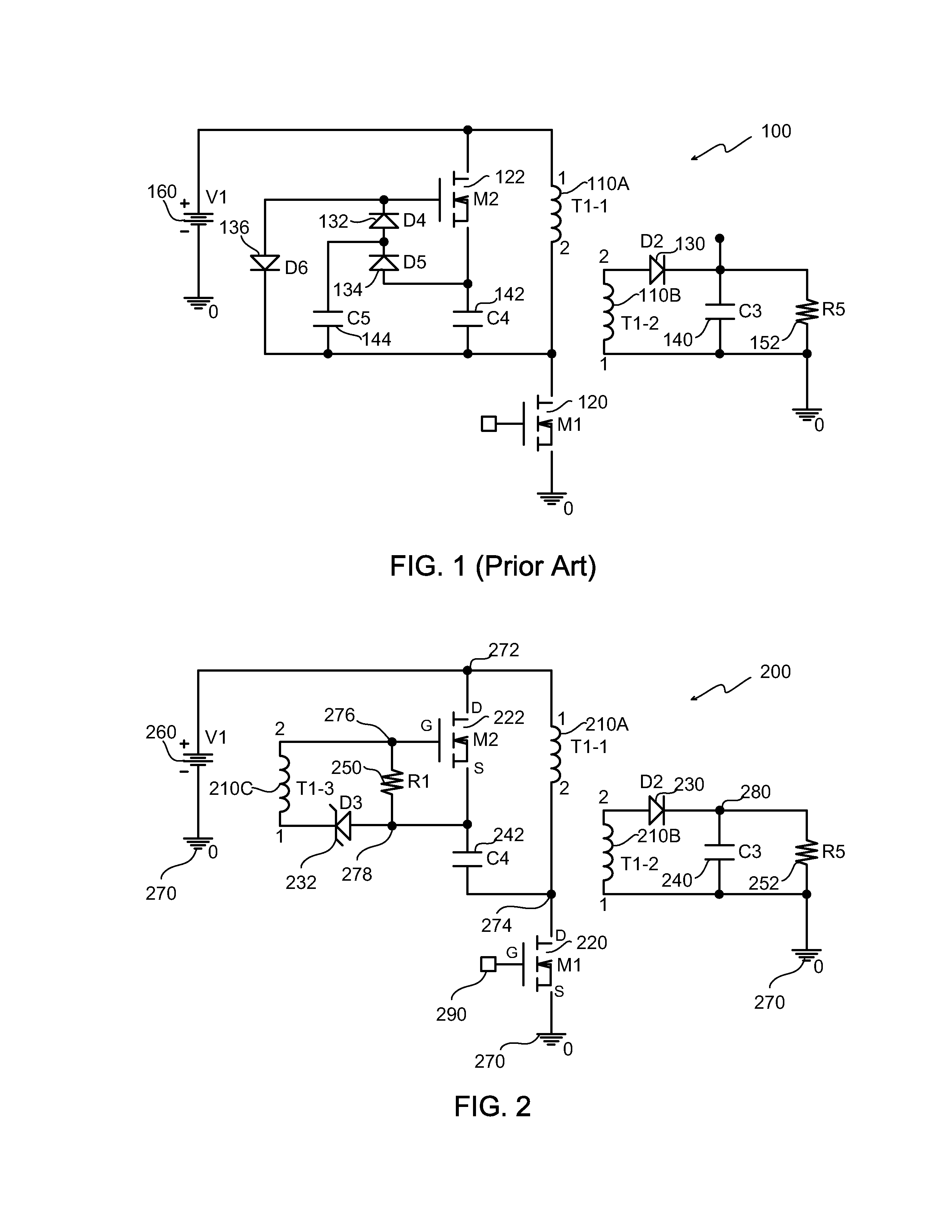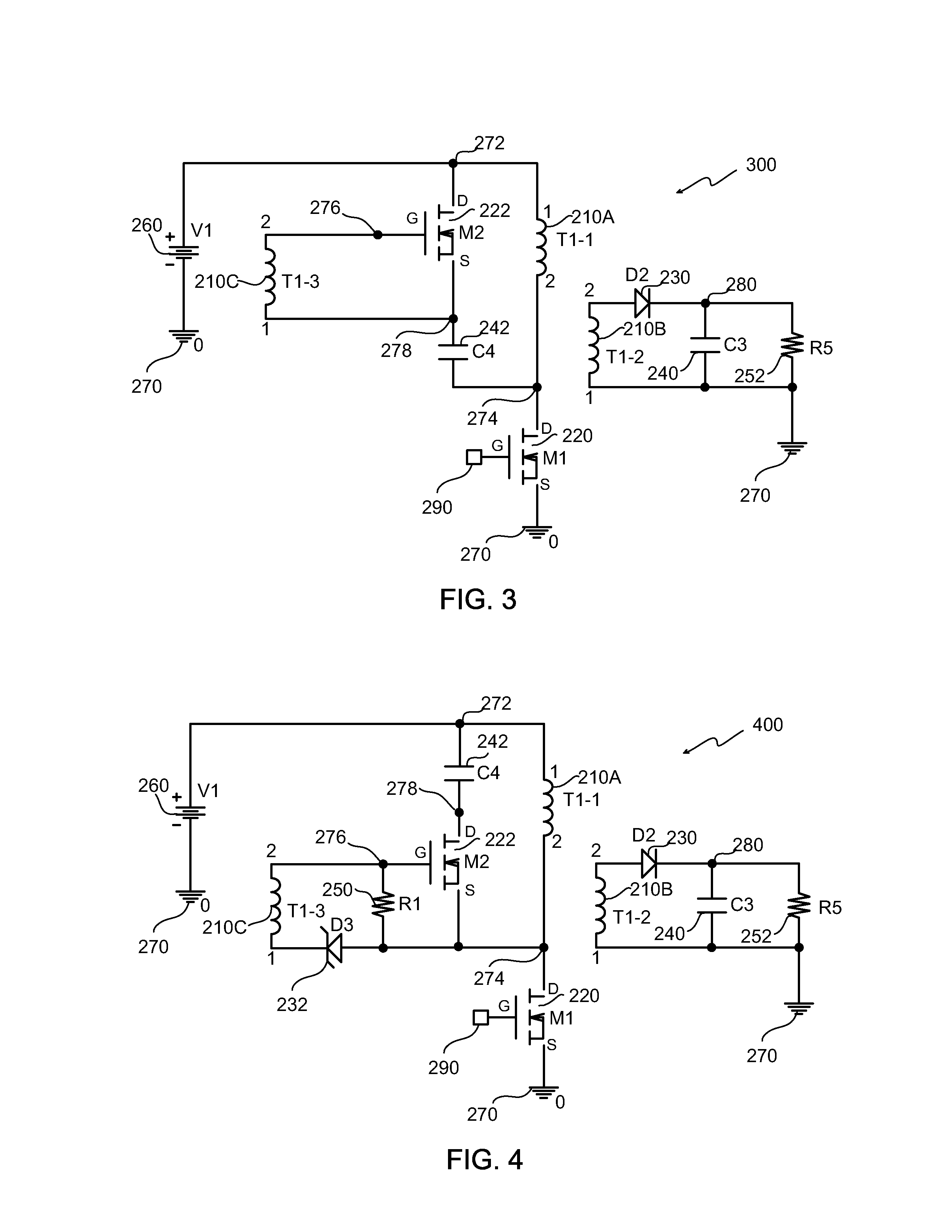Active snubber for transition mode power converter
a technology of power converter and active snubber, which is applied in the direction of power conversion system, dc-dc conversion, instruments, etc., can solve the problems of the prior power converter b>100/b> of fig. 1 that are less desirable for higher power applications, and achieve the effect of reducing the loss of turn on switching, and increasing the converter efficiency
- Summary
- Abstract
- Description
- Claims
- Application Information
AI Technical Summary
Benefits of technology
Problems solved by technology
Method used
Image
Examples
Embodiment Construction
[0016]FIG. 2 is a schematic diagram showing one embodiment of a transition mode power converter 200. The power converter 200 includes a transformer (T1) 210, two MOSFETS (M1, M2) 220 and 222, a diode (D2) 230, a zener diode (D3) 232, two capacitors (C3, C4) 240 and 242, and two resistors (R1, R5) 250 and 252. The power converter 200 is shown connected to a direct current voltage source 260. The transformer 210 includes primary and secondary windings (T1-1, T1-2) 210A and 210B and an auxiliary winding (T1-3) 210C.
[0017]The MOSFETS (M1, M2) 220 and 222 may be referred to herein as the primary MOSFET (M1) 220 and the auxiliary MOSFET (M2) 222. In FIG. 2, parasitic capacitances and inherent body diode characteristics of the primary and auxiliary MOSFETS (M1, M2) 220 and 222 are not illustrated. The primary MOSFET (M1) 220 may also be referred to herein as the primary switch and the auxiliary MOSFET (M2) 222 may also be referred to herein as the auxiliary switch. In this regard, the prim...
PUM
 Login to View More
Login to View More Abstract
Description
Claims
Application Information
 Login to View More
Login to View More - R&D
- Intellectual Property
- Life Sciences
- Materials
- Tech Scout
- Unparalleled Data Quality
- Higher Quality Content
- 60% Fewer Hallucinations
Browse by: Latest US Patents, China's latest patents, Technical Efficacy Thesaurus, Application Domain, Technology Topic, Popular Technical Reports.
© 2025 PatSnap. All rights reserved.Legal|Privacy policy|Modern Slavery Act Transparency Statement|Sitemap|About US| Contact US: help@patsnap.com



